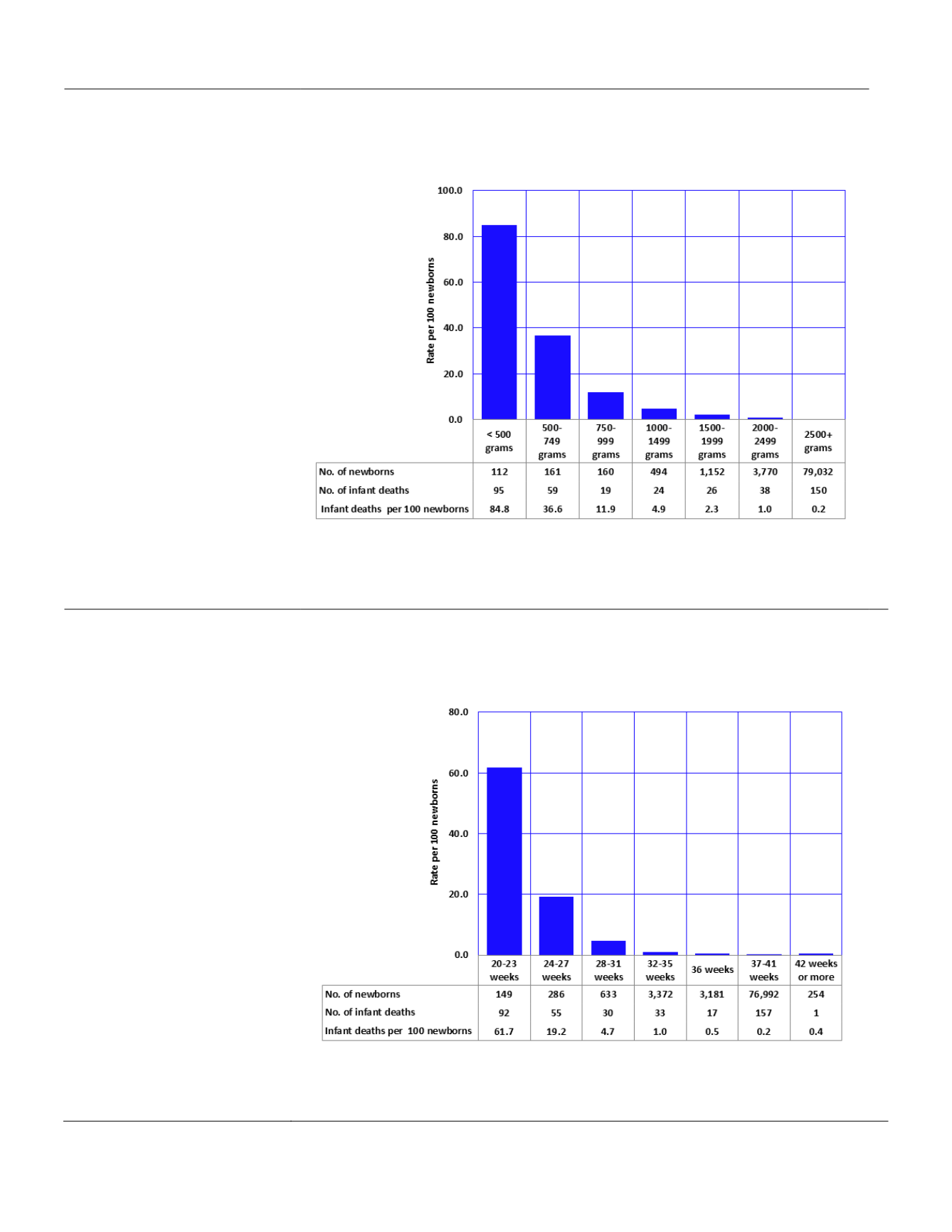
2C. AGE-SPECIFICMORTALITY
Infantmortality
Newborn weight at birth is one of
the most important predictors of
an infant?s survival chances. In
2013, the mortality rate among
babies weighing less than 500
grams at birth was 84.8 percent
(
Figure2C-3
).
The absolute number of low
birthweight
births
actually
declined for the sixth consecutive
year from 7,285 in 2007 to 5,849
in 2013. In 2013 the proportion
of babies whose weight at birth
was less than 1,000 grams
decreased from 8.1 percent of all
low birthweight births in 2012 to
7.4 percent in 2013 (
Table 1B-
3
).
Together, births of infants
weighing less than 1,500 grams
accounted for 1.1 percent of
births, and 47.4 percent of all
infant deaths with a matching
birth record.
Figure2C-3
Proportionof Infant Deaths byBirthweight, Arizona, 2013
Notes: 82 cases in the complete 2013 birth file hadmissing birthweight estimates.
As with low birthweight, preterm
and very preterm infants have a
large impact on the total infant
mortality rate because of their
much higher risk of infant
mortality. For example, births at
27 weeks or less of gestation
accounted for only 0.5 percent of
all births but 35.3 percent of
infant deaths with a matching
death record. Births at less than
24 weeks of gestation have a
very high infant mortality rate of
61.7 percent (
Figure 2C-4
).
Overall, preterm infants (those
born at less than 37 weeks of
gestation) accounted for 9.0
percent of all births (
Table 1B-
26
) and 54.6 percent of all infant
deaths (only those withmatching
death records).
Figure2C-4
Proportionof Infant Deaths byGestational Age, Arizona, 2013
Notes: 45 cases in the complete 2013 birth file hadmissing gestational age estimates, 31 of whichweremissing in the linked infant death file.
Arizona Health Status and Vital Statistics 2013
147


